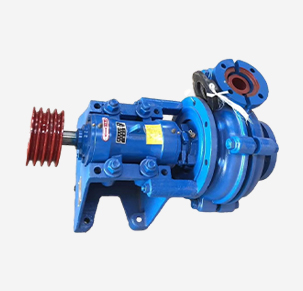English
- Afrikaans
- Albanian
- Amharic
- Arabic
- Armenian
- Azerbaijani
- Basque
- Belarusian
- Bengali
- Bosnian
- Bulgarian
- Catalan
- Cebuano
- Corsican
- Croatian
- Czech
- Danish
- Dutch
- English
- Esperanto
- Estonian
- Finnish
- French
- Frisian
- Galician
- Georgian
- German
- Greek
- Gujarati
- Haitian Creole
- hausa
- hawaiian
- Hebrew
- Hindi
- Miao
- Hungarian
- Icelandic
- igbo
- Indonesian
- irish
- Italian
- Japanese
- Javanese
- Kannada
- kazakh
- Khmer
- Rwandese
- Korean
- Kurdish
- Kyrgyz
- Lao
- Latin
- Latvian
- Lithuanian
- Luxembourgish
- Macedonian
- Malgashi
- Malay
- Malayalam
- Maltese
- Maori
- Marathi
- Mongolian
- Myanmar
- Nepali
- Norwegian
- Norwegian
- Occitan
- Pashto
- Persian
- Polish
- Portuguese
- Punjabi
- Romanian
- Russian
- Samoan
- Scottish Gaelic
- Serbian
- Sesotho
- Shona
- Sindhi
- Sinhala
- Slovak
- Slovenian
- Somali
- Spanish
- Sundanese
- Swahili
- Swedish
- Tagalog
- Tajik
- Tamil
- Tatar
- Telugu
- Thai
- Turkish
- Turkmen
- Ukrainian
- Urdu
- Uighur
- Uzbek
- Vietnamese
- Welsh
- Bantu
- Yiddish
- Yoruba
- Zulu
Telephone: +86 13120555503
Email: frank@cypump.com
Nov . 14, 2024 11:04 Back to list
slurry pump manual
Understanding the Slurry Pump A Comprehensive Guide
Slurry pumps are an essential component in various industrial processes, particularly those involving the transportation of mixtures of liquids and solids. The proper operation and maintenance of these pumps are crucial for ensuring efficiency, reducing downtime, and prolonging equipment life. This article explores the key features, operational principles, maintenance guidelines, and applications of slurry pumps.
What is a Slurry Pump?
A slurry pump is designed to handle the abrasive and corrosive nature of slurries, which consist of a combination of liquids (usually water) and solid particles (including ores, coal, and sand). Unlike standard centrifugal pumps, slurry pumps are constructed with tougher materials, allowing them to efficiently transfer heavy and viscous mixtures over considerable distances.
Key Features of Slurry Pumps
1. Construction Materials Slurry pumps are usually made from high-chromium metals, elastomers, or thermoplastics to withstand abrasion and corrosion. The choice of materials directly impacts the pump's longevity and effectiveness.
2. Impeller Design The impellers in slurry pumps are designed to handle large particles without clogging. They vary in size and shape to accommodate different slurry types, with some being open or semi-open to facilitate the movement of viscous mixtures.
3. Casing Many slurry pumps come with a removable casing that allows for easy access to internal components during maintenance. This feature is crucial for reducing downtime in operations.
4. Sealing Mechanisms Reliable sealing systems are vital for preventing leaks, which can cause environmental hazards as well as damage to the pump itself.
Operational Principles
Slurry pumps operate on the same basic principles as centrifugal pumps, relying on impeller rotation to impart energy to the slurry. The pump draws in the mixture from the inlet, which is then accelerated by the impeller and sent to the discharge through the pump casing. The design of the impeller and casing is critical for optimizing flow and pressure conditions.
slurry pump manual

Maintenance Guidelines
To ensure the longevity and efficiency of slurry pumps, regular maintenance is essential. Here are some key practices
1. Routine Inspection Regularly check for signs of wear in the impeller and casing. This can help detect issues before they lead to failure.
2. Proper Lubrication Ensure that the bearings and other moving parts are adequately lubricated to prevent overheating and wear.
3. Clearances and Alignments Maintain proper clearances and alignments of the pump's components, as misalignment can lead to premature wear and failure.
4. Monitoring Performance Keep an eye on the parameters such as flow rate, pressure, and power consumption to identify any fluctuations that might indicate problems.
Applications of Slurry Pumps
Slurry pumps are used across various industries, including
- Mining and Mineral Processing They transport minerals and slurries in ore processing plants. - Chemical Industry Used for transferring slurries during the production of various chemicals. - Wastewater Management Essential for treating and transporting sludge and other waste materials. - Construction Utilized in the mixing and transportation of concrete, cement, and other composite materials.
Conclusion
In conclusion, slurry pumps play a crucial role in the efficient handling of abrasive and corrosive mixtures across multiple industrial sectors. Understanding their features, operational principles, and maintenance requirements will help optimize performance and extend their lifespan. By investing time in proper maintenance and operational protocols, industries can greatly benefit from the reliability and efficiency that high-quality slurry pumps provide.
-
Horizontal Split Case Pump with GPT-4 Turbo | High Efficiency
NewsAug.01,2025
-
ISG Series Pipeline Pump - Chi Yuan Pumps | High Efficiency, Durable Design
NewsAug.01,2025
-
Advanced Flue Gas Desulfurization Pump with GPT-4 Turbo | Durable & Efficient
NewsJul.31,2025
-
ISG Series Vertical Pipeline Pump - Chi Yuan Pumps | Advanced Hydraulic Design&Durable Construction
NewsJul.31,2025
-
ISG Series Vertical Pipeline Pump - Chi Yuan Pumps | Energy Efficient & Low Noise
NewsJul.31,2025
-
pipeline pump - Chi Yuan Pumps Co., LTD.|High Efficiency&Low Noise
NewsJul.31,2025










